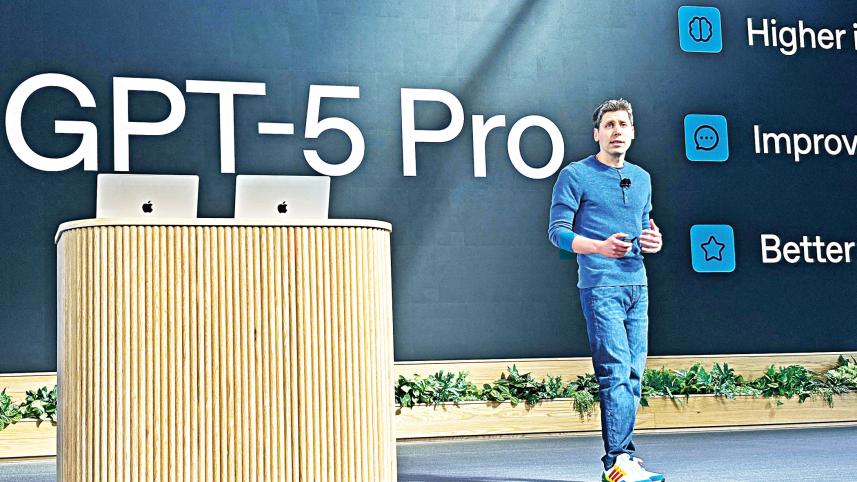OpenAI takes its cut for expanding the AI boom

Sam Altman should be used to starring in bizarre fantasies by now. Thanks to OpenAI's Sora model, the artificial intelligence company's boss can be seen shoplifting or directing a movie set in life-like videos. Yet they pale next to the reality-bending might of a press release. On Monday, Altman announced a huge, multi-year order of chips. The twist is that they're from second-choice AMD, while OpenAI gets the option to purchase, for a nominal sum, up to 10 percent of the $340 billion firm in return. It may help restrain the costs of server farms fueling the AI boom. It just depends on seemingly fantastical spending.
OpenAI's revenue and now-$500-billion valuation are growing at incredible speed. So too are its costs. Even with aid from Nvidia, the company expects to burn over $100 billion before it reaches profitability in 2029. Nurturing a stronger competitor among its suppliers could help slash these enormous expenses.
AMD just isn't there yet. Yes, tech giants are buying its chips, but Nvidia's are the gold standard for training new models, where falling behind is unacceptable. AMD's silicon is primarily useful for inference, or running those trained models, a less profitable slice of the business. The company's shares lag leagues behind Nvidia's.
Still, if AMD can make the leap to training, returns could be large. Go back ten years, and its stock vastly outperformed the S&P 500 Index as it gained share in the traditional processor market from then-dominant Intel.
A purchase order for enough chips to consume 6 gigawatts of power - equivalent to the demand of nearly 5 million homes - over five years provides stability and a seal of technological approval from OpenAI. That might encourage other buyers to step forward.
Altman is taking a cut. After all, cheaper chips also benefit his competitors. The option to buy a chunk of AMD almost for free is his reward. If the chipmaker's business benefits, OpenAI captures the value. It's also effectively a rebate on the purchases, just one that doesn't hurt AMD's reported margin.
That's if it works. This is all on paper. Chip delivery starts in late 2026. The stock-purchase rights are conditional on orders and shares appreciating in value. Moreover, between Altman's recent agreement with Nvidia and today's, he is committing his company, and its partners, to buy 16 gigawatts of computing power. Assume $50 billion a gigawatt in costs, and that's $800 billion. That far outstrips giant Microsoft's cumulative expected free cashflow through the rest of the decade, according to Visible Alpha. Nonetheless, AMD's market value jumped an incredible $72 billion on the news. Investors, at least, already trust in the fantasy.
OpenAI and AMD on October 6 announced an agreement under which AMD would supply six gigawatts' worth of chips over several years, either directly to OpenAI or its cloud partners, starting in the second half of 2026.
As part of the agreement, OpenAI will receive warrants allowing it to purchase up to 160 million AMD shares, or about 10 percent of the chip company, at 1 cent a share. The first tranche vests after the initial shipment of MI450 chips next year, and remaining tranches vest based on a combination of chip deliveries, technical milestones, and AMD stock reaching certain price targets.
AMD executives expect the deal to net tens of billions of dollars of annual revenue, and more than $100 billion in new revenue in total, as new customers besides OpenAI buy chips.
AMD shares opened up 37 percent following the announcement at the beginning of trading on October 6.



 For all latest news, follow The Daily Star's Google News channel.
For all latest news, follow The Daily Star's Google News channel.